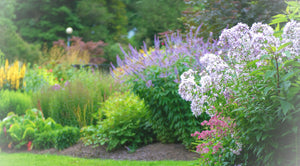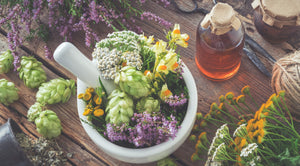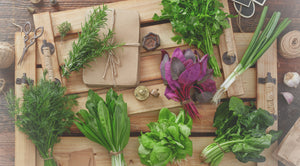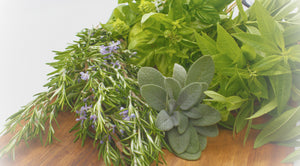Every gardener knows that plants are special. Plants are the essence of the garden, the essence of life. But, how many of us understand the real importance of plants and their significance to our future?
Remember photosynthesis? Probably not! Plants can do one thing that no animal can do: plants can capture energy from the sun and convert that energy into compounds such as proteins, fats and carbohydrates. This is a complex conversion: plants take energy from the sun, minerals and water from the soil and gases from the atmosphere. These raw materials are converted into chemical forms of energy used for plant growth. Animals use these energy-rich compounds as a source of food and nutrition. These basic energy-rich compounds are the SOURCE of energy for all animal life on the planet, including man. Plants provide all energy that we need to live. The oxygen we need to live on Earth is coming out of green plants as a byproduct of photosynthesis. Plants are also working to prevent the erosion of our soils, thus preventing water loss into the atmosphere.
Plants are also an important source of drugs; over one fourth of all prescriptions contain a plant-derived product. Scientists are constantly screening plants in search of new compounds to combat disease.
Plants need mineral nutrients from the soil, water and atmosphere in order to maintain healthy growth and reproduction. Macronutrients include hydrogen, oxygen, and carbon as well as nitrogen, phosphorus, potassium, sulfur and calcium. If you notice on the side of any fertilizerbag, the numbers correspond to: Nitrogen is an important component of chlorophyll and proteins used to construct DNA, cell membranes and other important compounds in the cell.
Phosphorus is used in building DNA and cell development.
Potassium is used in the development of tubers, roots and other storage organs.
All these macronutrients are vital for healthy growth. The micronutrients, such as iron, copper and magnesium, are important to plant growth as well.
Higher plants begin life as a seed, which germinates and develops roots and leaves using food stored in the seed. Humans and animals take advantage of the high-quality food in seeds when they eat plants such as wheat, rice and corn. The leaves produce chlorophyll, which allows for growth and development. Once the plant reaches maturity, flower production begins. Flowers hold the sexual apparatus of the plant.
Sepals: The outermost part of the flower. They cover the young bud, and are usually green.
Petals: The next layer, the petals are usually colorful and play an important role in attracting pollinators.
Stamens: Located next to the petals. The stamens are the “male” reproductive parts of the flower. They produce pollen, the fine dust like particles that will divide to form sperm cells. The tissue at the end of the stamen that holds pollen is called the anther.
Pistil: The innermost part of the flower. These are the female reproductive apparatus. The stigma, located at the tip of the pistil, is covered with a sticky substance and is the site where pollen is deposited. The stigma is held by a floral tube, the style. The ovary, at the base of the style, holds one to many ovules, which contain eggs that are undeveloped seeds.
Pollination is the transfer of pollen from the anther to the stigma. Pollen is transferred by an insect, wind, or drops of rain. Once the pollen has been deposited on a stigma, the pollen grains grow into tubes that travel down the floral tube into the ovary. The sperm cells are deposited onto the ovules. Fertilization takes place! After fertilization, the entire floral structure is transformed into a fruit, either fleshy (peach) or dry (peas). In each of the fruits, fertilized eggs develop into seeds.
Contact us or shop our selection at The Grower's Exchange to have live herb plants delivered right to your door!





